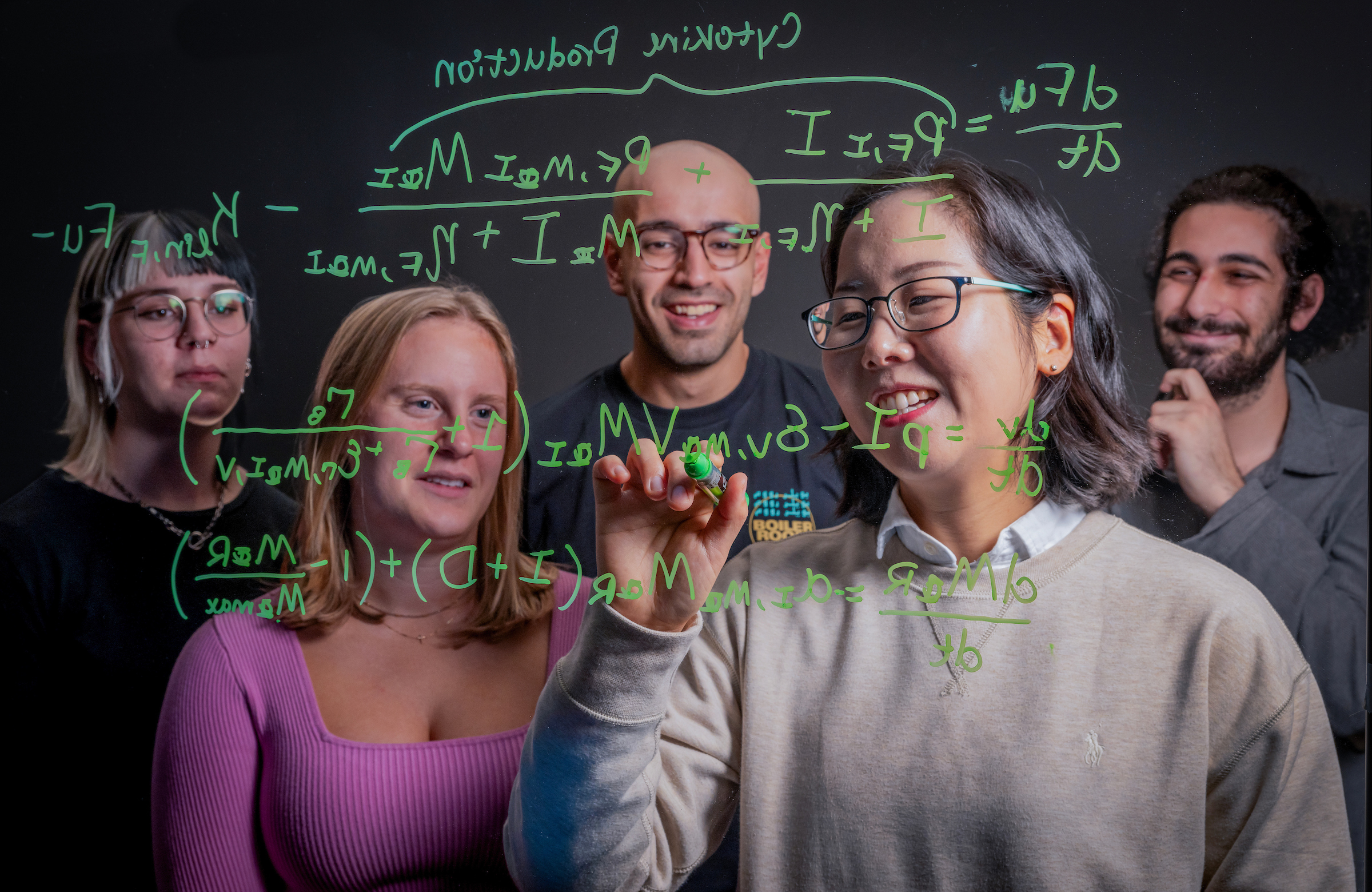Blending math, biology, computer science and engineering, four undergraduates and their mentor, Hwayeon Ryu, are developing a mathematical model in a three-year, $300,000 project funded by the National Science Foundation. In the process, they’re finding their future paths.
Call them COVID code breakers.
Equipped with the latest research and skills in math, biology, engineering and computer science, some of Elon’s brightest minds are working together to unlock COVID-19’s medical mysteries in a $300,000 National Science Foundation-funded research project.
Their mission is to create a mathematical model of complex equations that predict how the human immune system responds to the virus. Encompassing the myriad ways our bodies react to COVID-19, their model could guide future research, new treatments and save lives.
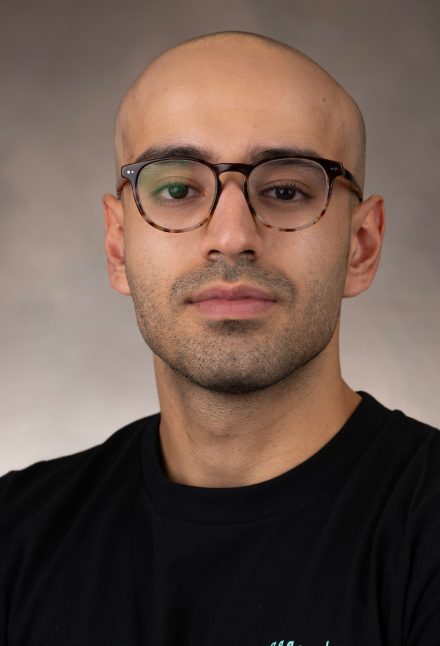
“We want to provide a blueprint for where medical research should go,” said Ayesh Awad ’24, the team member largely responsible for fine-tuning the model’s equations. “If you want to build a car, you don’t go into a facility and start building. You have to prototype, draw, model and simulate. The same happens in medicine, and mathematical modeling is a more efficient way to begin actual experiments.”
Led by Assistant Professor of Mathematics Hwayeon Ryu, the team of undergraduates — Awad, Rony Dahdal ’26, Mary Hermes ’24 and Carissa Potter ’24 — spent last summer and fall expanding an initial model created by a previous team. Validating their model and the accuracy of its predictions has required them to follow emerging studies and literature around the virus. It’s also connected them to researchers around the world and involved mentoring by recent Elon alumnus Thomas Wilson ’23, who is pursuing his master’s degree in immunology.
The National Science Foundation awarded Ryu the three-year grant in spring 2022 following a year of collaborative research with faculty and students at Wake Forest University. Ryu’s vision was to create a team of Elon students from across STEM majors who could decipher research around COVID-19 through their individual disciplines then mentor each other as they communicated their findings.
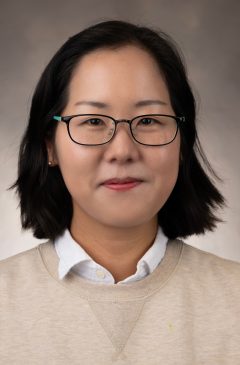
“The diversity and group dynamics have been beneficial for everyone,” Ryu said. “We’re learning from each other and maximizing the synergistic energy from our expertise and backgrounds. Our accomplishments last year were amazing and we’re very much looking forward to moving into the next steps of generating model results that tell a good story.”
The model includes 12 components, four of which are small proteins called cytokines that can regulate the body’s immune response. Elon’s team is particularly interested in replicating an immune response known as a “cytokine storm,” when an excessive release of cytokines causes inflammation that can harm the body.
“Researching something involving COVID is exciting because it’s still relevant and affecting people,” Hermes said. “I appreciate that the work we’re doing has real-world applications and that we can see its impact.”
Their weekly meetings resemble an interdisciplinary game of hot potato, with each bringing new information or insights from their fields.
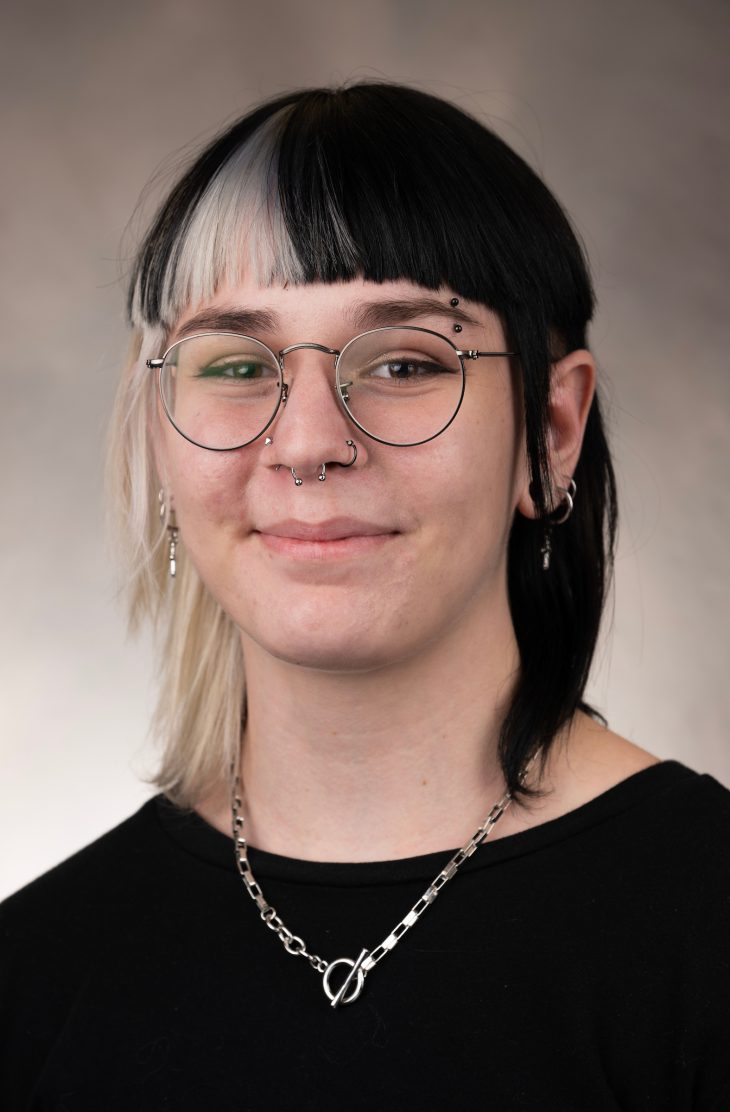
Potter is a biostatistics major with a biology minor from Gastonia, North Carolina, charged with ensuring their outcomes match biological findings in newly published research. Awad, a Lumen Scholar from Amman, Jordan, and Hermes, of Bethesda, Maryland, handle much of the math as engineering majors with biomedical concentrations. Dahdal, a computer science major and Honors Fellow from Wake Forest, North Carolina, will be instrumental in running the sensitivity analysis that validates the final model, which the team will unveil this spring at the National Conference on Undergraduate Research in Long Beach, California.
They liken the process to learning how to translate a language for foreign speakers.
“Sometimes we bounce off each other so well,” Potter said. “Mary and Ayesh and I put the biology and math together, then Rony comes in with coding that fixes something. And sometimes it’s frustrating because we’re all explaining the same complicated thing in different ways but don’t realize it.”
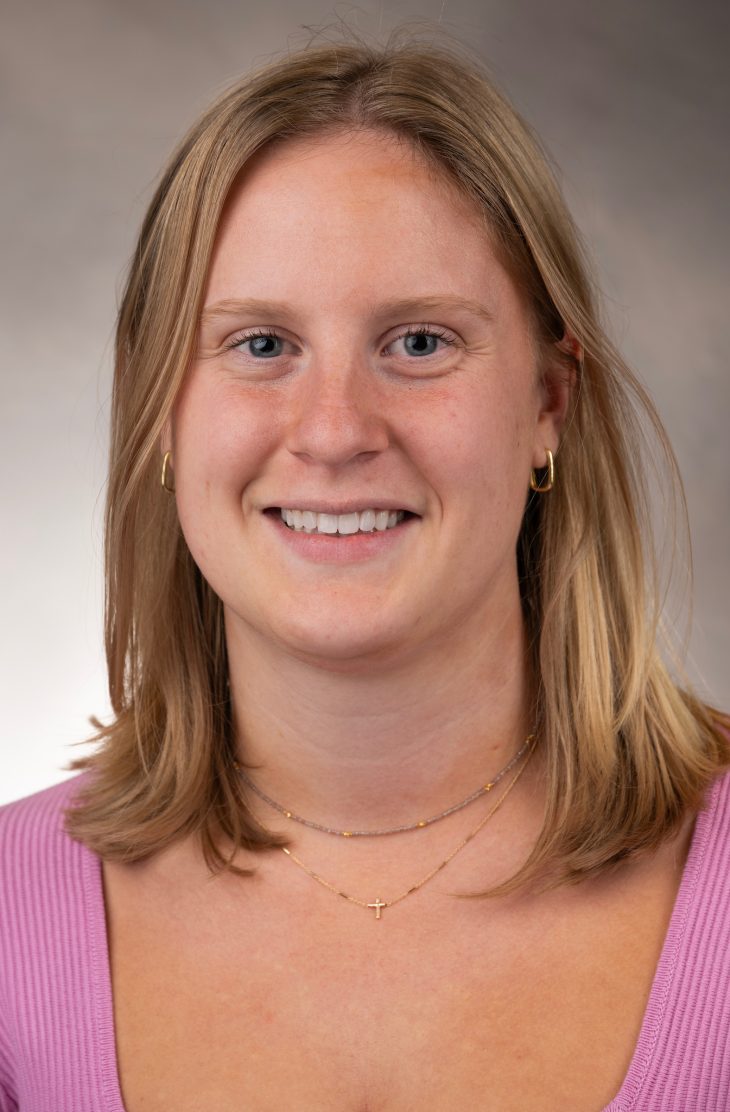
A first team of undergraduate researchers built a preliminary model beginning in August 2022 and included Wilson, Hermes, Lauren Hill ’24 and Griffin Pace ‘25. Ryu especially credits Wilson as crucial to the project by bridging biology and computer science. Wilson also co-led the project during the 2023 Summer Undergraduate Research Experience and has continued mentoring the current team while enrolled in the University of Rochester School of Medicine and Dentistry’s Master of Science in Microbiology and Immunology Program.
“This project at Elon was my first opportunity to study viral infections, and it’s part of the reason I’m studying viruses and not just the immune system,” Wilson said. In his career, he wants to advance cures for dangerous diseases like Ebola and Dengue fever.
Work this fall has been spent refining more than 20 parameters in the model. Each must be verified against human biology and limited clinical data “so that what we see in a simulation is what we expect to see biologically,” Ryu said.
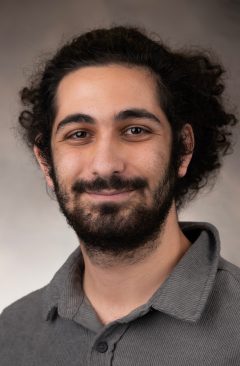
Those efforts have put them in touch with experts around the globe, corresponding with researchers in Canada, Europe and most recently with Senior Lecturer Adrianne Jenner of Queensland University of Technology in Brisbane, Australia.
“This is a collaborative effort with everyone in the world,” Dahdal said. “Everyone loves contributing to cool, new and important stuff and everyone is in it together. They are usually surprised that we as undergraduates have the opportunity to collaborate in a project like this.”
This project is the first time Ryu has mentored a collaborative team of undergraduates and it’s gone better than she hoped. Each member has developed skills and identified new career paths.
Potter initially shied away from math but is now applying to biostatistics doctoral programs with Ryu’s support. Hermes discovered health informatics and is exploring graduate programs in the field. Dahdal gained peer mentors who’ve helped him navigate his next few years at Elon. Awad found so much fulfillment in collaborative research that he plans to enroll in post-graduate programs to strengthen his business acumen and leadership skills to “be more like Dr. Ryu.”

“She understands everyone’s strengths and plays on them. It’s not just one size fits all,” Awad said. “That’s why we’re successful at achieving our goals. She gives the right amount to everyone.”
The modeling project will continue in 2024 and 2025, and potentially afterward, with a new team further refining and perfecting the equations.
“Mary once said that diversity is our unique strength for our collective growth,” Ryu said. “At Elon, we usually think about undergraduate research as a one-on-one experience. I’m grateful to be able to give this opportunity to my students so that they can experience teamwork and collaborative research.”



